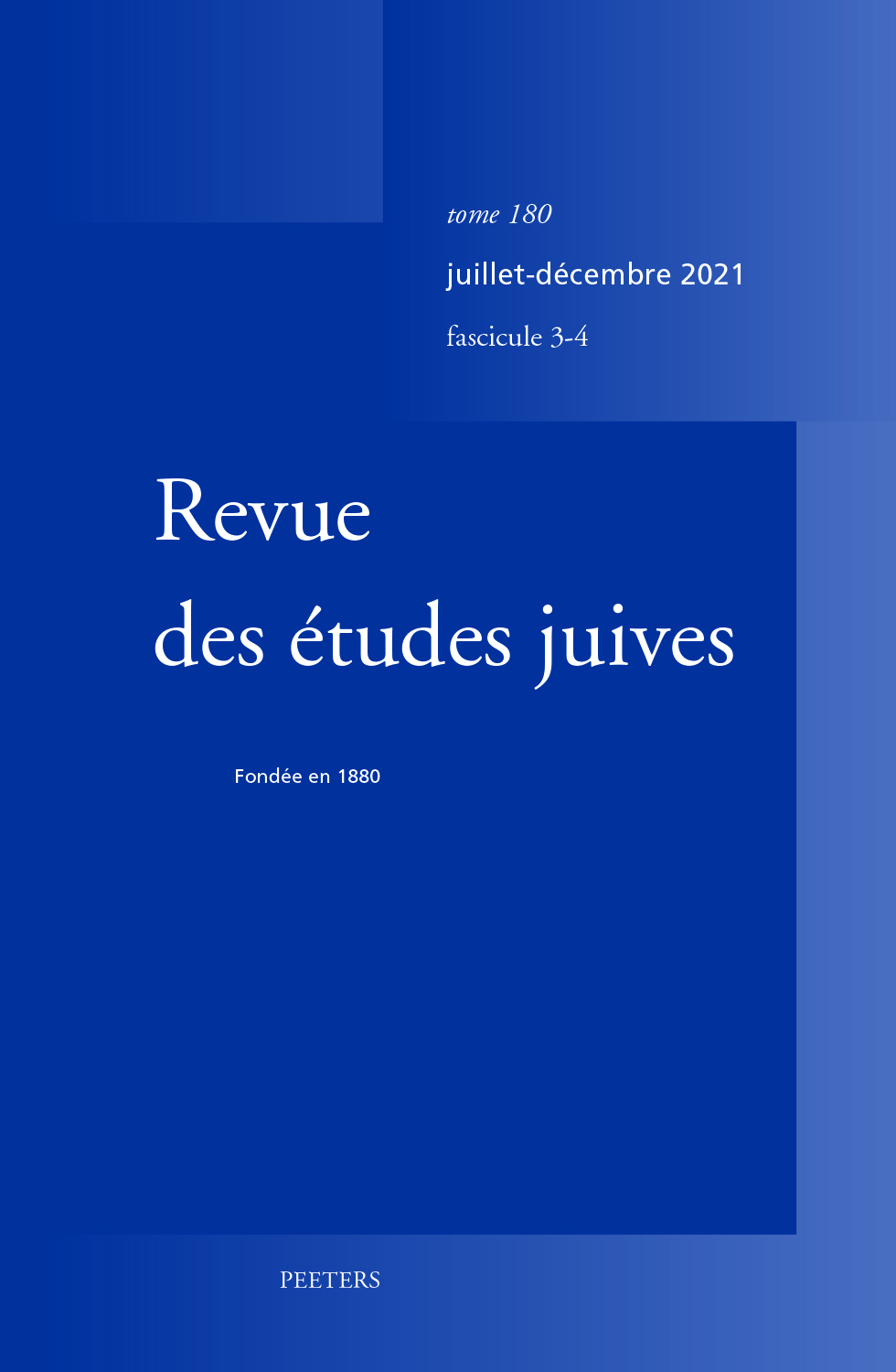 previous article in this issue previous article in this issue | next article in this issue  |

Preview first page |
Document Details : Title: Intervocalic Alef/Yodh interchanges in Mishnaic Hebrew Author(s): BREUER, Yohanan Journal: Revue des Études Juives Volume: 159 Issue: 1-2 Date: janvier-juin 2000 Pages: 63-78 DOI: 10.2143/REJ.159.1.150 Abstract : L'alternance intervocalique entre aleph et yoda est très fréquente en hébreu. Dans cet article les conditions de cette alternance en hébreu mishnique sont définies et comparées à celles des autres sources hébraïques. Il résulte de notre étude qu'il faut distinguer le yod originel de l'aleph originel. L'aleph originel subsiste toujours, sauf quand il constitue la troisième lettre radicale. Dans ce cas, il s'agit d'un changement morphologique (3e rad. aleph > 3e rad. yod) plutôt que phonologique. Quand la consonne originelle est un yod, elle peut se transformer en aleph. Cette évolution peut être analysée selon trois paramètres: 1) les conditions phonologiques: le changement ne survient qu'après la voyelle qames, alors qu'après les autres voyelles le yod se maintient dans toute la littérature rabbinique; 2) les différentes branches de l'hébreu rabbinique: dans la branche babylonienne le changement est constant tandis que dans la branche palestinienne elle ne l'est pas; 3) l'hébreu rabbinique par opposition à toutes les autres sources: ce changement n'est conditionné que dans la littérature rabbinique, mais ailleurs il ne l'est pas. Cela prouve que l'hébreu rabbinique, est un dialecte indépendant, avec ses propres règles, qui diffère non seulement de l'hébreu de la Bible et des manuscrits de la mer Morte, mais aussi des sources épigraphiques de l'époque rabbinique. Intervocalic interchange between aleph and yod is most frequent in Hebrew. This article defines the conditions of this interchange in mishnaic Hebrew and presents a comparison with other Hebrew sources. The author demonstrates that it is necessary to distinguish the original yod from the original aleph. The original aleph always perdures, except when it serves as the third radical letter, in which case this should be read as a morphological rather than a phonological change (3rd radical aleph > 3rd radical yod). This evolution may be analysed along three parameters: 1) the phonological conditions: the interchange only occurs after a qames vowel, whereas after other vowels the yod persists throughout the entire rabbinical corpus; 2) the different branches of rabbinical Hebrew: the interchange occurs consistantly in the Babylonian, but not in the Palestinian branch; 3) rabbinical Hebrew vs other sources: the interchange is conditioned only in rabbinical literature, and not elsewhere. This demonstrates that rabbinical Hebrew constitutes an independant dialect with its own rules, differing not only from biblical Hebrew or from the Dead Sea manuscripts, but also from epigraphic sources of the rabbinical period. |
|


